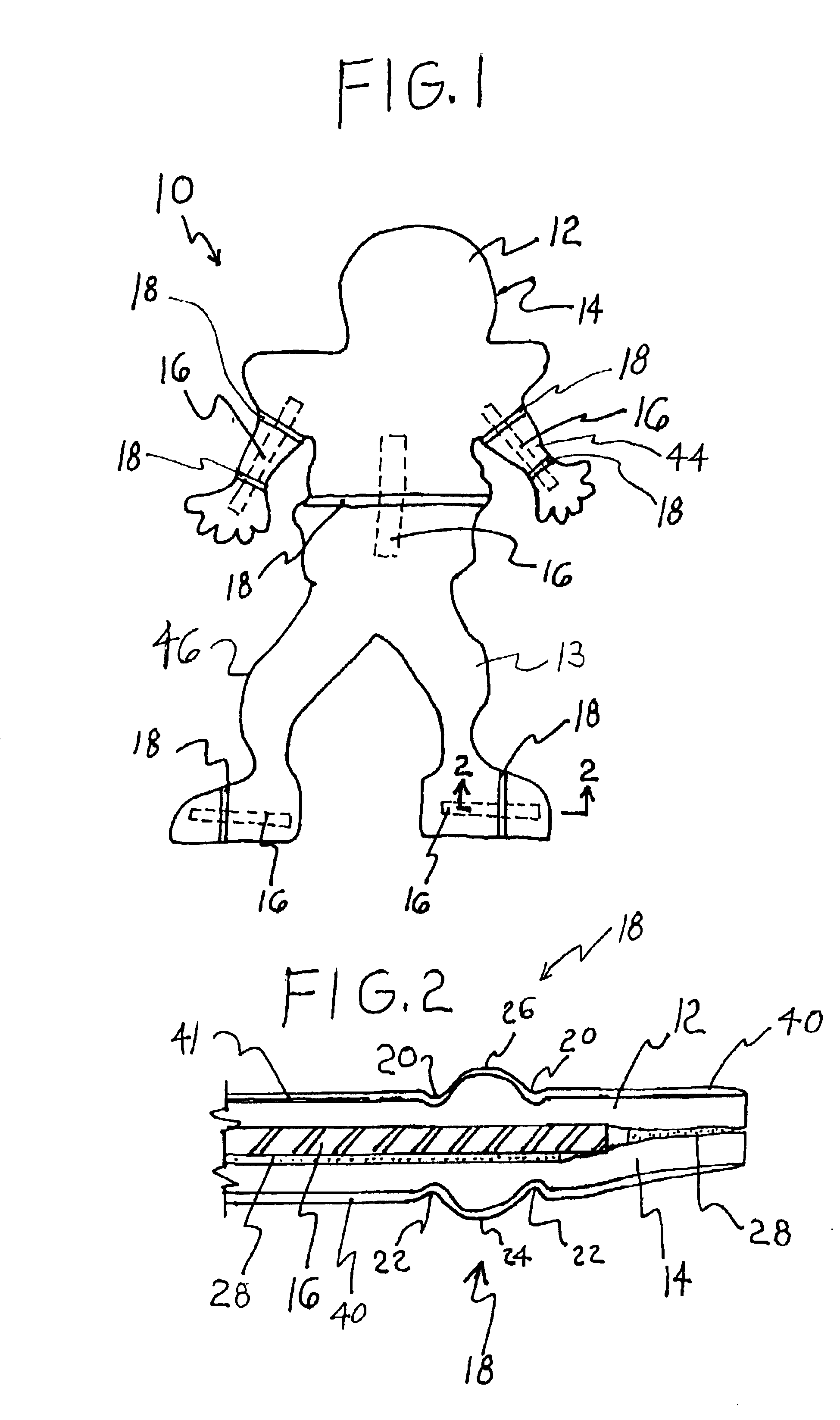Articulated display
a technology of articulating and displaying, which is applied in the field of signs and displays, can solve the problems of increasing the likelihood of display damage, display unusability, and often having structures that cannot be collapsed without damaging the display, and achieves the effect of eliminating hand labor of placing the bendable substrate and improving the yield of sheets
- Summary
- Abstract
- Description
- Claims
- Application Information
AI Technical Summary
Benefits of technology
Problems solved by technology
Method used
Image
Examples
Embodiment Construction
[0020]Referring to FIGS. 1 and 2, an articulated display 10 has a front or first substrate 12 attached or layered on a second or back substrate 14. The substrates 12, 14 are preferably made from a generally rigid or stiff material such as cardboard, foam board such as FOMECORE™, PVC board such as SINTRA™, corrugated boards, tag stock boards or chipboard. Alternatively, the generally rigid substrates 12, 14 can be made of any material that is rigid enough to remain generally planar when held on its edges (when standing upright) yet yields when force is applied to bend the substrates—preferably when bent by hand. It will also be appreciated that the two substrates 12, 14 do not need to be of the same type of material although the display parameters (e.g. to display the same thing on both the back and front of the display or adhesive liquid to attach the substrates to each other) may require it.
[0021]The display 10 also has generally flat, plastically bendable reinforcing plates 16 dis...
PUM
 Login to View More
Login to View More Abstract
Description
Claims
Application Information
 Login to View More
Login to View More - R&D
- Intellectual Property
- Life Sciences
- Materials
- Tech Scout
- Unparalleled Data Quality
- Higher Quality Content
- 60% Fewer Hallucinations
Browse by: Latest US Patents, China's latest patents, Technical Efficacy Thesaurus, Application Domain, Technology Topic, Popular Technical Reports.
© 2025 PatSnap. All rights reserved.Legal|Privacy policy|Modern Slavery Act Transparency Statement|Sitemap|About US| Contact US: help@patsnap.com



